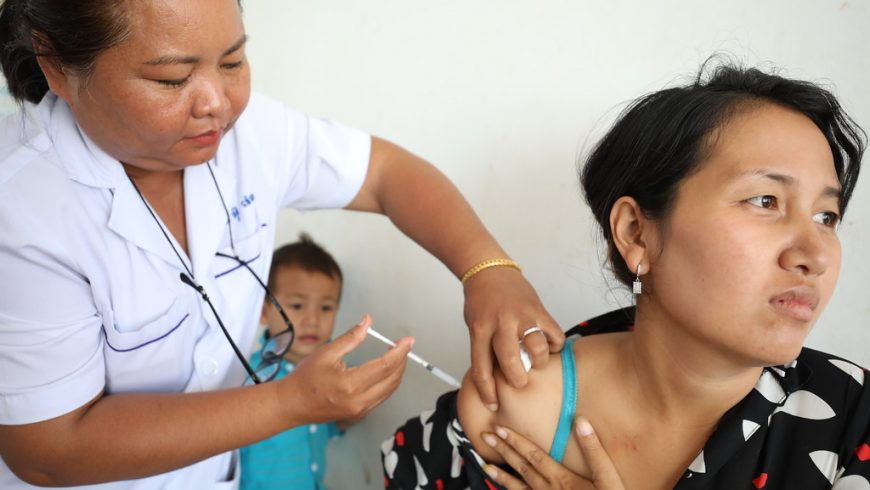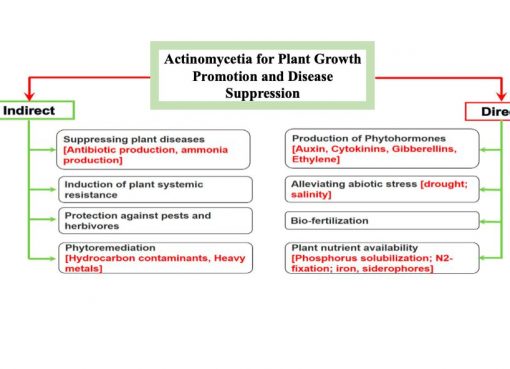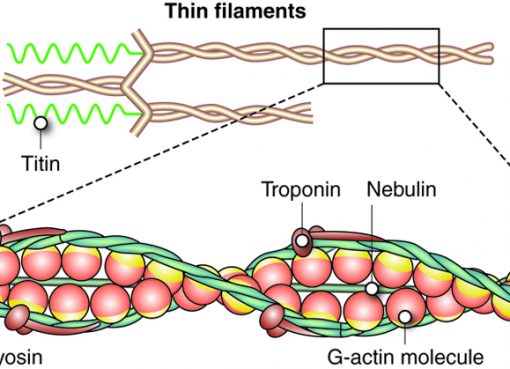Written by- Hirakjyoti Rajbongshi
Immunity is the status of an individual’s body which gives protection from infection or disease. Simply, it can be said to be the defence system of the body. It can be inherited by birth such as the natural barriers like skin, White Blood Corpuscles (WBCs), Cytokines, Lysozyme etc. or it can be acquired throughout life due to exposure to an antigen or by vaccination. Vaccines are the biological preparations that are injected to the body to produce immunity against a disease and this process of administering a preparation to the body is known as vaccination. The term immunization is connected to the word immunity, and it means a process by which a body is protected from a disease by vaccination. It provides acquired immunity to the body. Immunization is essential to every human being but here we will discuss only about the pregnant women, the newborns and the children.
Women at the time of pregnancy are vulnerable to many diseases. Out of these, maternal tetanus and diphtheria are very specific. Both tetanus and diphtheria are caused by bacteria. Tetanus is caused by toxigenic strains of Clostridium tetani and Corynebacterium diphtheriae causes diphtheria.
Maternal tetanus may occur after miscarriage, unsafe abortion, or due to unhygienic delivery. There are life-threatening breathing problems that may occur due to the tightening of the vocal cord and the rigidity of the muscles in the neck, abdomen, etc. In the case of diphtheria, sore throat and watery drainage from the nose are common. Suffocation can happen due to the obstruction in breathing caused by abnormal throat membranes. Here, one may feel pain in swallowing. Based on the recommendations of the National Technical Advisory Group on Immunization (NTAGI), Ministry of Health and Family Welfare (MOHFW) which follows the World Health Organization (WHO) recommendations, two doses of tetanus and adult diphtheria vaccines are injected. In a simple term, it is known as Td and in this single vaccine, both tetanus and diphtheria are combined with a lower concentration of diphtheria antigen. The first dose is given whenever the pregnancy is detected and confirmed, and after one month of the first dose, the second dose should be taken by the pregnant woman. Td is given intramuscularly in the upper arm and the dose is 0.5 ml. Most importantly, another vaccine Td-booster may also be given when pregnancy occurs within 3 years of the last pregnancy and both Td-1 and Td-2 were taken during the earlier pregnancy.
Significantly, at the time of birth, the immune system of the newborn is not so strong. They may get ill very easily. Hence, they are to be vaccinated. The vaccines that are received by the newborn are mentioned below –
- Hepatitis-B (Hep-B): Hepatitis B causes a very serious liver disease. That is why Hep-B vaccine is given to protect from the liver diseases such as liver damage or liver cancer at the time of birth within 24 hours. The dose is 0.5 ml which is given intramuscularly, and the site of injection is antero-lateral side of mid-thighLEFT.
- Oral Poliovirus Vaccine (OPV): It gives protection from the dangerous polio which makes a man handicapped throughout life. The newborn gets OPV-0 and after 1½ months till 2 years of age, three OPV vaccines and one booster are given in a schedule. OPV provides humoral and intestinal immunity. From the name, it can be understood easily that it is fed orally and the dose is two drops each time.
- Bacillus Calmette Guerin (BCG): This vaccine is given for prevention of tuberculosis. It can be taken at birth till one year of age. The dose is 0.05 ml till the age of 1 month from the birth and after the one month till one year, the dose is 0.1 ml. It is given once intradermally in the left upper arm.
After six weeks from birth, the infant is vaccinated routinely during childhood up to the age of 16 years. According to Universal Immunization Programme (UIP), routine immunization is carried out at intervals. These vaccines are cited below –
- Fractional Inactivated Poliovirus Vaccine (FIPV): It is injectable and is given for protection from poliomyelitis. Three doses of FIPV are to be injected. It can be given to children up to 1 year of age, in case of delayed immunization. The dose is 0.1 ml and injected intradermally in the upper right arm.
- Pneumococcal Conjugate Vaccine (PCV): It is a very important vaccine for pneumonia Pneumonia can be life threatening, particularly the infants. In pneumonia, lungs are affected and filled with fluid or pus in the air sacs. Two PCV doses and one booster dose are taken and can be received by children up to 1 year of age, in case of delayed immunization. The dose is 0.5 ml, and the site is antero-lateral side of right mid-thigh and given intramuscularly
- Pentavalent vaccine: By this single vaccine, children can be protected against five major life-threatening diseases, viz., diphtheria, pertussis (whooping cough) tetanus, Hepatitis-B and Hib (Hemophilus influenzae type b) Three doses are given at different Maximum duration is up to 1 year of age of the infant. The dose is 0.5 ml, intramuscularly injected and the site is antero-lateral side of mid-thigh -left.
- Rota Vaccine: – It is given orally, and the dose is 5 drops at a time up to the age of one Three doses are administered, and it prevents diarrhoea.
- Measles and Rubella (MR): Measles is a contagious infection in small children that causes fever, red blotchy skin rash, etc. On the other side, Rubella is also contagious, particularly in teenagers and adults. Symptoms can be nausea, fever, sore throat, tender lymph nodes etc. MR gives protection from measles and rubella and up to five years of age, this vaccine can be given. Two doses of it are administered subcutaneously in the upper right arm.
- Japanese Encephalitis: Japanese Encephalitis is a fatal disease which causes serious brain swelling with sudden headache and high fever. Stiffness occurs in the neck and in children, seizure is Two doses of it are given and it gives protection from brain contamination by Flavivirus due to the bite of infected culex mosquito. It is also subcutaneously injected in the upper left arm.
- Diphtheria, Pertussis, Tetanus (DPT) booster: Two doses are taken. The first one is in between 16-24 months, and the second one is in between 5-6 years of age of the child.
The vaccination schedule of the above-mentioned vaccines is given in the following chart-
UIP Schedule
| Sl. No. | Age | Vaccine Schedule |
| 1 | At birth | OPV-O, Hep-B, BCG, Vit-K |
| 2 | At 1 ½ months | OPV-1, Penta-1, Rota-1, PCV-1, FIPV-1 |
| 3 | At 2 ½ months | OPV-2, Penta-2, Rota-2 |
| 4 | At 3 ½ months | OPV-3, Penta-3, Rota-3, PCV-2 , FIPV-2 |
| 5 | At 9 months | MR-1, JE-1, FIPV-3, PCV booster, Vit A |
| 6 | At 16-24 months | DPT booster – 1, MR-2, JE-2, OPV Booster, Vit-A |
| 7 | At 5-6 years | DPT booster – 2 |
| 8 | At 10 years | TD |
| 9 | At 16 years | TD |
| 10 | For pregnant women | TD1: early in pregnancy TD2: one month after TD1
TD booster: If the Pregnancy occurs within three years of last pregnancy and both TD1 and TD2 were received. |
There is a saying that today’s child is tomorrow’s future. So, for a better future, a healthy life is more important than any other factors. Therefore, for maintaining a good healthy immune system, an individual should be strong. Hence, mass immunization against highly prevalent diseases is necessary for achieving herd immunity. The Government of India has run a flagship immunization campaign mission, the Intensified Mission Indradhanush (IMI-5.0) has been over in October- November 2023. Nevertheless, we should be aware of the need of immunization and it is our duty to protect the pregnant women, newborns and the children through regular immunization against the prevalent infectious diseases.




